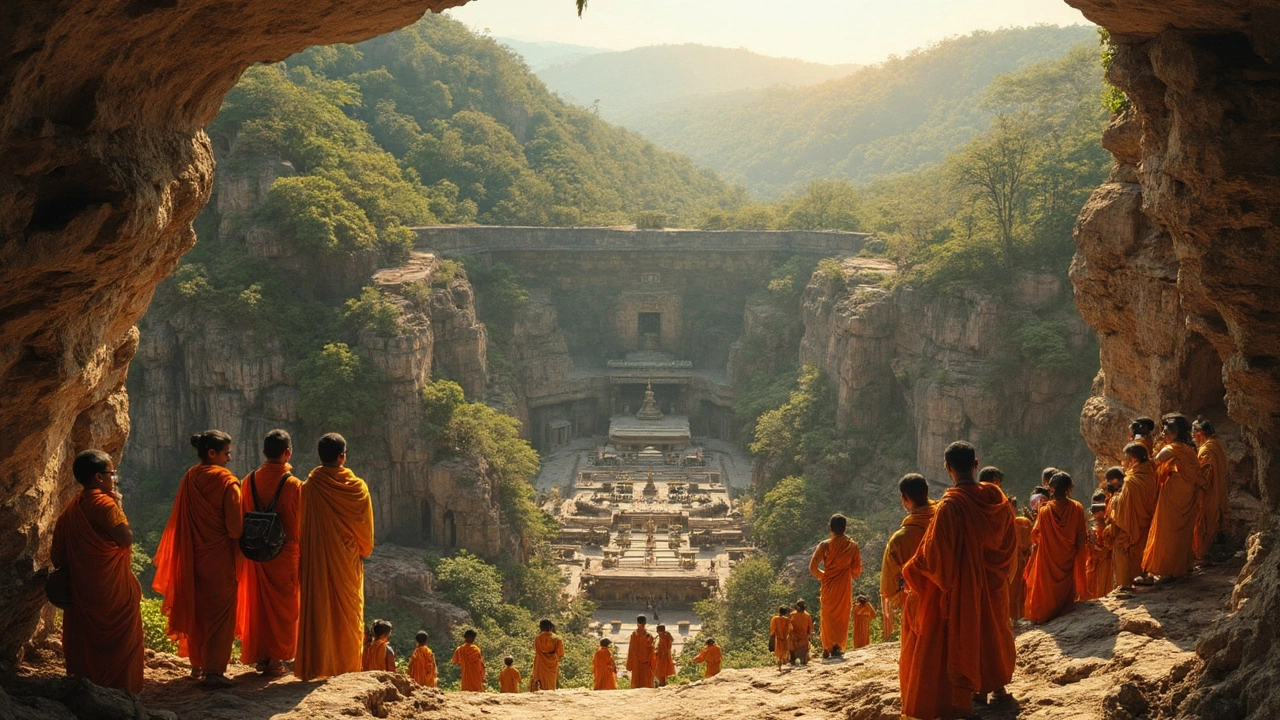
First Indian Art Masterpiece: Discover the Ajanta Caves’ Timeless Brilliance
Uncover how the Ajanta Caves became the first masterpiece of Indian art, why they still captivate the world, and what makes their history and detail unforgettable.
When you think of Indian sculpture, three-dimensional sacred art rooted in spiritual tradition and crafted over thousands of years. Also known as Hindu-Buddhist-Jain statuary, it's not just decoration—it’s a form of worship, storytelling, and cosmic representation. Unlike Western sculpture that often celebrates the human form for its beauty alone, Indian sculpture gives form to the divine. Every curve, gesture, and expression carries meaning. The lotus under a deity’s foot? It’s purity rising from chaos. Multiple arms? Power beyond human limits. Blue skin? Infinity made visible.
This art form isn’t one style. It’s a conversation across time and place. In Tamil Nadu, the South Indian temple art, highly detailed stone carvings found in Dravidian temples, often depicting gods in dynamic poses with ornate jewelry and flowing drapery feels alive—gods seem to step off the walls. In North India, the Hindu deities art, statues carved from sandstone or bronze, emphasizing symmetry and calm, often found in temple sanctums leans into stillness. And then there’s the stone carving India, the ancient technique used to shape granite, soapstone, and schist into gods, dancers, and mythical beings, often without modern tools—a craft passed down through generations, where a single block of rock becomes a thousand stories.
These sculptures didn’t just sit in temples. They were part of daily life. Pilgrims touched them for blessings. Artists signed their work, even if anonymously. Kings commissioned them to prove their devotion. And today, you can still see their influence—in museums, in home altars, even in modern Indian films that borrow their poses and expressions. What makes Indian sculpture unique isn’t just the skill. It’s the belief that the statue isn’t just a representation—it’s a vessel. That’s why you’ll find offerings placed at its feet, flowers laid on its base, and lamps lit before it.
What you’ll find in the posts below isn’t a dry history lesson. It’s the real stories behind the stone. Why are some gods blue? How did a dance pose become a statue? Why do some sculptures have four arms and others have none? You’ll see how these carvings connect to festivals, music, and even modern misunderstandings about Hinduism. No fluff. Just the art, the meaning, and the people who made it.

Uncover how the Ajanta Caves became the first masterpiece of Indian art, why they still captivate the world, and what makes their history and detail unforgettable.